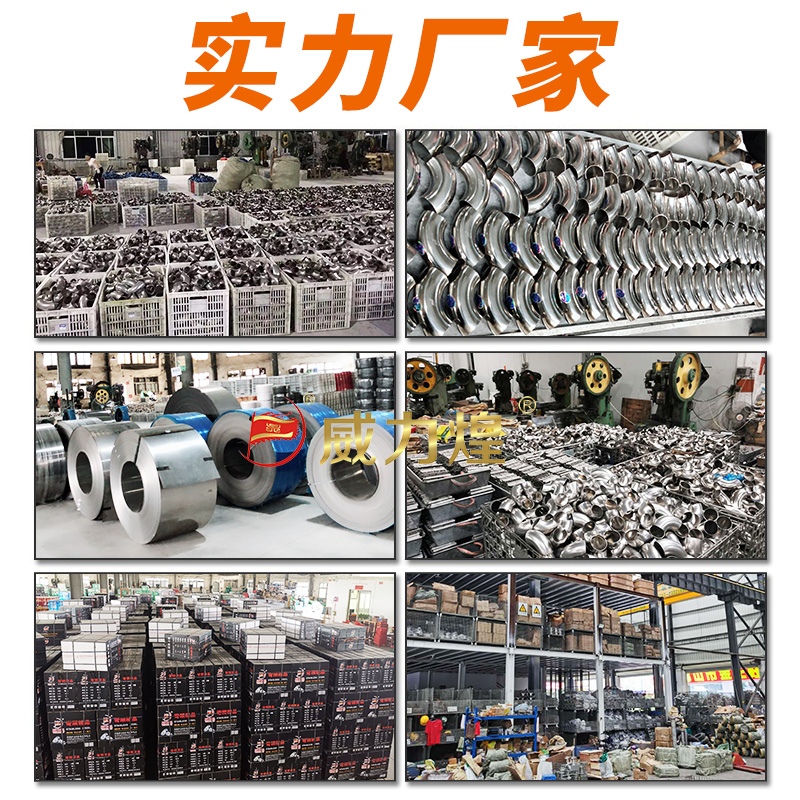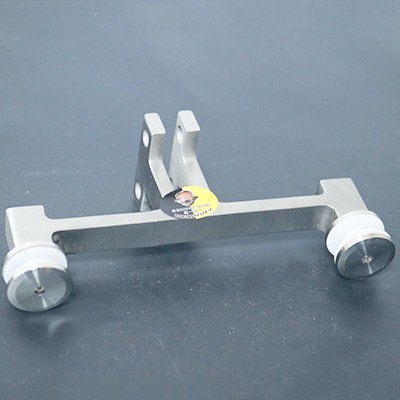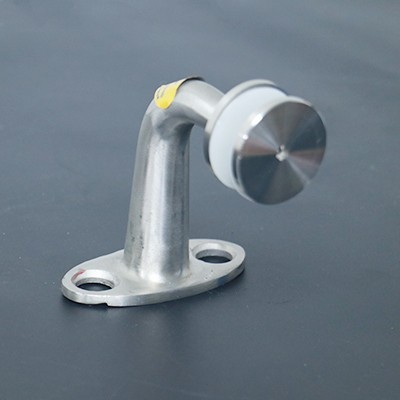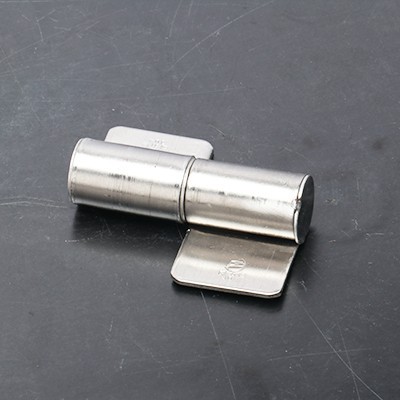Stainless steel possesses unique strength, high wear resistance, superior anti-corrosion performance and is not prone to rust, among other excellent properties. Therefore, it is widely used in the chemical industry, food machinery, mechanical and electrical industry, environmental protection industry, household appliance industry, home decoration and fine decoration industry, giving people a sense of magnificence and nobility.
Stainless steel possesses unique strength, high wear resistance, superior anti-corrosion performance and is not prone to rust, among other excellent properties. Therefore, it is widely used in the chemical industry, food machinery, mechanical and electrical industry, environmental protection industry, household appliance industry, home decoration and fine decoration industry, giving people a sense of magnificence and nobility. The application and development prospects of stainless steel will become increasingly broad, but the application and development of stainless steel largely determine the development level of its surface treatment technology. The main component of stainless steel: Generally contains chromium(Cr)Nickel(Ni)Molybdenum(Mo)Titanium(Ti)Such high-quality metal elements. Common stainless steels: There are chromium stainless steels, includingCr≥12%The above;Nickel-chromium stainless steel, containingCr≥18%ContainNi≥12%. Classified by the microstructure of stainless steel: there are austenitic stainless steels, for example:1Cr18Ni9Ti,1Cr18Ni11Nb,Cr18Mn8Ni5. Martensitic stainless steel, for example:Cr17,Cr28Wait. It is generally called non-magnetic stainless steel and magnetic stainless steel. The common surface treatment techniques for stainless steel include the following methods: surface natural color whitening treatment;The surface is mirror-polished;Surface coloring treatment. Surface natural color whitening treatment: During the processing of stainless steel, after rolling, edge binding, welding or manual surface heat heating treatment, black oxide scale is produced. This hard grayish-black oxide scale is mainlyNiCr2O4andNiFTwo kindsEO4The components were previously generally removed by strong corrosive methods using hydrofluoric acid and nitric acid. However, this method is costly, pollutes the environment, is harmful to human health and has strong corrosiveness, and is gradually being phased out. Which method to choose for the surface treatment of stainless steel depends on the product structure, material, and different surface requirements, and the appropriate method should be selected for treatment.
Processing area: The processing area for stainless steel parts should be relatively fixed. The platforms in the stainless steel parts processing area should take isolation measures, such as laying rubber pads, etc. The fixed-position management and civilized production in the stainless steel parts processing area should be strengthened to avoid damage and pollution to the stainless steel parts.
Blanking: The blanking of stainless steel parts is carried out by shearing, plasma cutting, sawing, etc.
(1)Shearing: During shearing, it should be isolated from the feeding support, and the dropping hopper should also be lined with a rubber pad to avoid scratches.
(2)Plasma cutting: After plasma cutting, the cutting slag should be cleaned up thoroughly. When performing batch cutting, the completed parts should be promptly removed from the site to prevent the cutting slag from contaminating the workpieces.
(3)Sawing and blanking: When sawing and blanking, the clamping should be protected by rubber. After sawing, the oil stains, residues, etc. on the workpiece should be cleaned.
Mechanical processing: Stainless steel parts should also be protected during mechanical processing such as turning and milling. After the operation is completed, the oil stains, iron filings and other debris on the surface of the workpiece should be cleaned up thoroughly.
Forming processing: During the plate rolling and bending processes, effective measures should be taken to prevent surface scratches and creases on stainless steel parts.
Riveting and welding: When assembling stainless steel parts, forced assembly should be avoided, especially flame baking assembly. When plasma cutting is temporarily adopted in the assembly or manufacturing process, isolation measures should be taken to prevent the cutting slag from contaminating other stainless steel parts. After cutting, the cutting debris on the workpiece should be cleaned up thoroughly.
Welding: Before welding stainless steel parts, oil stains, rust, dust and other impurities must be carefully removed. When welding, argon arc welding should be used as much as possible. When manual arc welding is adopted, a small current and rapid welding should be used to avoid swinging. Arcs must not be initiated in non-welding areas. The ground wire should be properly positioned and firmly connected to prevent arc scratches. Anti-spatter measures should be taken during welding(Such as brushing white lime and other methods). Stainless steel should be used after welding(Carbon steel shall not be used.)A flat shovel thoroughly cleans up the slag and splashes.
Multi-layer welding: When performing multi-layer welding, the slag between layers must be completely removed. When performing multi-layer welding, the temperature between layers should be controlled and generally should not exceed60℃.
Weld seam: The weld joint should be ground. The surface of the weld seam must not have defects such as slag, pores, undercutting, spatter, cracks, incomplete fusion, or incomplete penetration. The weld seam should smoothly transition with the base metal and must not be lower than the base metal.
Correction: For the correction of stainless steel parts, flame heating methods should be avoided, especially repeated heating of the same area is not allowed. When correcting orthotics, mechanical devices or wooden hammers should be used as much as possible(Rubber hammer)Or use a rubber pad and hammer. Do not hammer with an iron hammer to avoid damaging the stainless steel parts.
(three)Surface treatment
Cleaning and grinding: Any damage should be ground, especially scratches and splashes caused by contact with carbon steel parts, as well as damage caused by cutting slag, which must be carefully and thoroughly cleaned and ground clean.
Mechanical polishing: Appropriate polishing tools should be used for polishing. The treatment should be uniform and consistent, and over-polishing and re-scratching should be avoided.
Degreasing and dust removal: Before pickling and passivation of stainless steel parts, oil stains, oxide scale, dust and other impurities must be removed in accordance with the process.
Water sandblasting treatment: Different micro-glass beads and process parameters should be selected based on different treatment requirements, and overblasting should be avoided, etc.
Pickling and passivation: The pickling and passivation of stainless steel parts must be carried out strictly in accordance with the process requirements.
Cleaning and drying: After pickling and passivation, neutralization, rinsing and drying should be carried out strictly in accordance with the process to thoroughly remove any remaining acid solution.
Protection: After the surface treatment of stainless steel parts is completed, proper protection measures should be taken to prevent secondary pollution from human touch and oil stains, dust and other debris.
Avoid reprocessing: After the surface treatment of stainless steel parts is completed, reprocessing of the component or product should be avoided.

Foshan Weilihuang Trading Co., Ltd. is a leading manufacturer specializing in the production and sales of international and domestic stainless steel hardware accessories and its own brands. The company is located at Tianjinli Hardware Accessories Center, Lanshi 2nd Road, Chancheng District, Foshan City, Guangdong Province8seat10-12The number (i.e., the main entrance of the market) has an abundant supply of goods, a complete range of varieties, wide coverage, favorable prices, and stable and superior quality!
The company uses high-quality stainless steel and exquisite craftsmanship to ensure there are no weld marks at the interfaces. Its products feature novel designs, elegant craftsmanship, and long-lasting durability. The company has always adhered to the principle of quality first and reputation first. It is equipped with mature production facilities and has strong technical strength, thus ensuring the quality of its products. The company is willing to make unremitting efforts to join hands with our customers to create a win-win situation and provide high-quality products for our partners.





 +86 189-2994-8884
+86 189-2994-8884  +86 40000 18348
+86 40000 18348 workweixine4959b@www.wlh348.com
workweixine4959b@www.wlh348.com Building K, Jinguagang Ceramic Market, Shiwan Street, Chancheng District, Foshan, China
Building K, Jinguagang Ceramic Market, Shiwan Street, Chancheng District, Foshan, China
 Wechat QR code
Wechat QR code Mobile phone QR code
Mobile phone QR code Wechat official account
Wechat official account